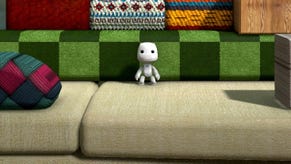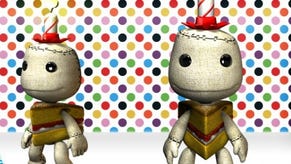Digital Foundry vs. LittleBigPlanet 2
The full story on Sony's closed beta.
The second major innovation is direct control with the controlinator, where you can map the controller's input to any component in your level. This means you can attach the left stick to move a flying saucer around the level directly, whereas in LBP you had either to control things with levers, or more ingenious creators would use something like a hidden jetpack inside a ring of grabbable material, controlling a contraption moving magnetic key switches.
Along with the wide array of material and object options from components, the controlinator blows open the types of games that can be made in LBP2, and already we're seeing classic 2D games like scrolling shooters and top-down racers. There's even a convincing Micro Machines level in MM's Picks - the area of the game where Media Molecule showcase their favourite levels.

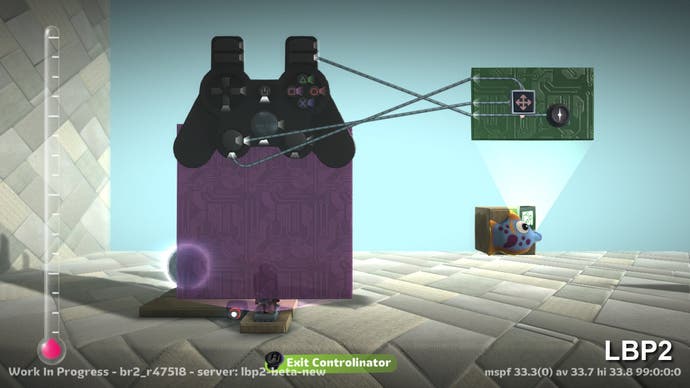
The third and final innovation, and definitely the cutest improvement on the original, is the inclusion of the new Sackbots which supersede LBP's very limited creatures. They come in wooden-puppet-robot form, but can be dressed in any sackboy costume, so you can populate the world with real Sackpeople instead of cardboard cut-outs.
They can be resized from munchkins to giants according to your whim and they also have autonomous behaviour that matches the player's capabilities. Sackbots can follow targets, avoid dangers, chase the player, avoid the player, and most importantly use the player upgrades powergloves, creatinator and controlinator, which means Sackbots can carry, throw, shoot, build, and control, just like the player.
Of course, AI for all those actions is going to be hard to program, but Sackbots can be taught actions which they repeat as "Actors". You set a Sackbot's AI type to Actor, then you gain direct control of the Sackbot exactly as if it were your Sackboy as you record it jumping, grabbing, using items, waving hands and dancing. Once recorded, a set of actions can be replayed, and your Sackbot runs off to work autonomously.
You can record actions onto Sackbot brain-chips, and select between them or activate them on demand. In a shooter level we made, we created enemies using a Sackbot in a controlinator chair wired up to an enemy-spawning contraption. Every creature that flies at the player is created because a Sackbot pressed a button - in essence an AI dungeon master!
And for their best trick, you can gain direct control of a Sackbot from within a controlinator. This basically beams you into the Sackbot and allows you to possess its body. With that comes the advantages of changing the Sackbot's responses to control inputs. Using your real Sackboy, pressing the square button is hard-wired to call up the PopIt menu. There's an RPG concept level on MM Picks that has pressing the square button summon an RPG-style inventory screen. The creator has you control a Sackbot without realising it, and when you press the square button, the controlinator activates a system of alternative cameras to show the inventory pages. The gameplay opportunities are pretty amazing, and as you can combine behaviours using Sackbot brains, you can mix and match.
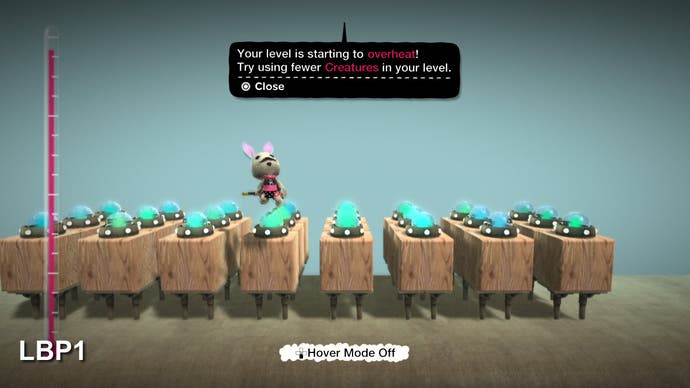
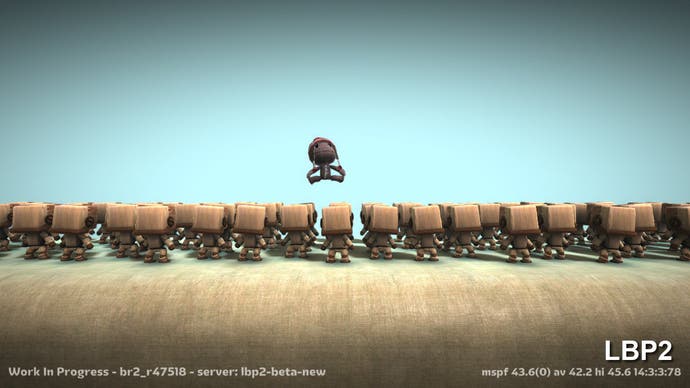

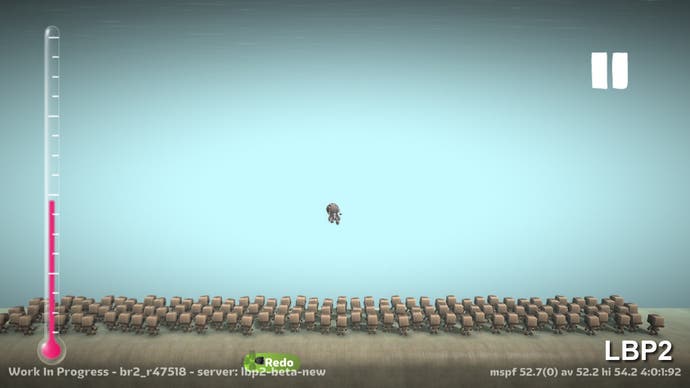
Media Molecule has also overhauled the amount of resources available to the player. To illustrate, in the original LittleBigPlanet, 24 cloned creatures was the limit before you blew the thermometer. In LBP2 we made an army of 150 creatures using the old creature components with the thermometer only a little over half full. We then made a level of 150 Sackbots and it cost a bit more juice, but then the Sackbots are so much cooler with so many more gameplay opportunities.
In the first LBP, the developer basically reserved all resources for a worst-case scenario. If you set 100 spawns active at once on an emitter, it'd use that much thermometer juice even if in game you only had five or six active. In LBP2, players can set massive limits and not worry about them. A shooter level we created has far, far more dynamically created content than anything we struggled with in LBP, and the thermometer never got above 50 per cent while making it.
There are a few noteworthy extras to creation too. One major time saver is the clip-object-to-sticker function. You take a cube of material and slap on whatever stickers you want, and then click a scissors-icon in the PopIt and the outline object is trimmed to the outline of your stickers. No more time consuming point-editing of object shapes!
There are also a few areas that could do with expanding and improving, such as selective collisions. Our shooter level experiment is just plain broken, because you can't spawn fast enemies behind slow ones - they just pile up comically, whereas in a proper shooter you can overlap different enemy types and indeed, you'd want to mix it up as much as possible.
Some of the components options are also a bit obscure or counter-intuitive. Applying multiple movement components, their effects don't stack as you'd assume they would. On top of that, the various strength, speed and dampening variables are a bit perplexing, although the values are more logical than LBP1's scale-less numbers.
Another gripe is that the PlayStation Eye support is still atrocious. Whether it's the basic image quality from the camera or the compression scheme utilised, the posterised, dithered camera shots just don't offer a high enough quality, meaning that the PSEye sadly remains worthless as a tool to get images into LBP2.
Whether all of our issues with the beta will be fully resolved remains to be seen. Certainly, this week's announcement that the game would be delayed the New Year actually gives us more hope that the small niggles will all be ironed out in the full retail version of the game.
In truth, we have no real idea of just how old the beta code is, so it may well be that many of the issues have already been resolved. However, on a more general and exciting level, the sampler gives us a fantastic insight into the raw potential of the content creation modes of the new game and it's fair to say that the scale and scope of the user-generated levels should far outstrip what we saw with the original LittleBigPlanet.
So as an indication of the power of the level creation tools, the beta is nothing short of magnificent. In terms of how successful Media Molecule has been in delivering a massively improved gameplay experience, there's not much to go on - the tiny handful of levels that shipped with the beta, with their rope-swinging and gravity-defying vehicles, give us only the most fleeting, tantalising of glances at the quality and variety of the actual game we'll be playing in January.



